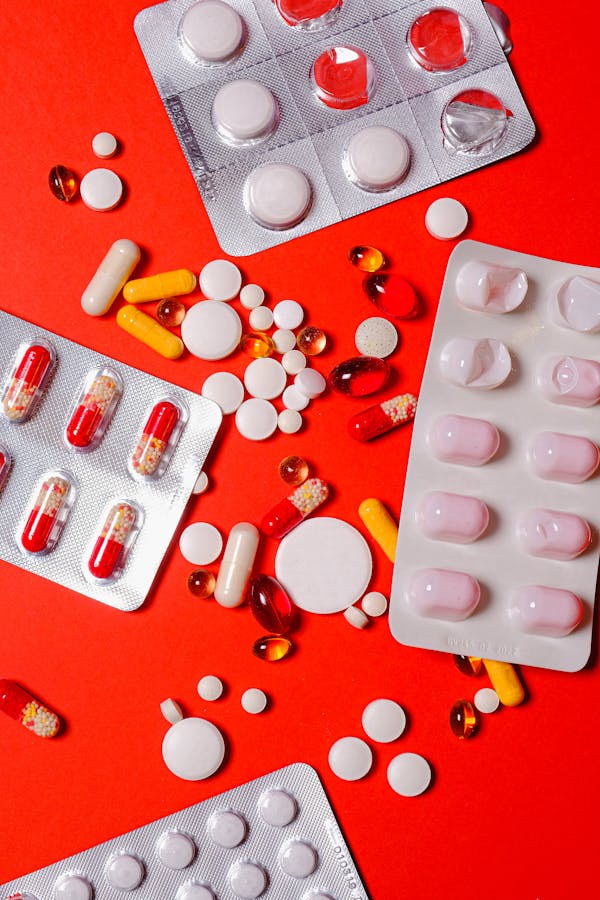Definition of PTSD
A terrifying event may cause PTSD, a mental health condition that can be brought on by witnessing or experiencing it. Nightmares, excruciating anxiety, flashbacks, nightmares, and unmanageable thoughts about the incident are just a few potential symptoms.
The majority of people who face traumatic events may initially struggle to adjust and cope, but with good self-care and time, they get better. You may have Painkillers for PTSD if the symptoms worsen, last for weeks, months, or even years, and affect your daily functioning.
Proper treatment after PTSD symptoms develop can be essential to lessen symptoms and improve function.
The prevalence of PTSD and its impact
The prevalence of PTSD varies based on the demographic being researched and the particular traumatic events involved, and it is not uncommon. Military personnel, first responders, and survivors of certain types of trauma are at a higher risk of developing PTSD.
The impact of PTSD can be profound, affecting not only the individual’s mental health but also their physical health and general quality of life. One aspect of this impact is the presence of physical pain in individuals with PTSD.
Pain and PTSD
In those with PTSD, the connection between physical and emotional pain is complicated. Through a variety of causes, such as muscle tension, sleep problems, and modifications in the neurological system’s sensitivity to pain, trauma can cause physical discomfort.
On the other hand, emotional distress can be made worse by physical pain, making it increasingly more challenging for those with Painkillers for PTSD to manage their symptoms properly.
The Importance of Effective Pain Management for PTSD
Effective pain management is essential for people with PTSD for various reasons:
A. Improved Quality of Life
Chronic pain may reduce a person’s quality of life, hindering their ability to engage in daily activities, work, and maintain relationships. Managing physical pain effectively may lead to a better overall quality of life for those with PTSD.
B. Enhancing Mental Health Treatment
Painkillers for PTSD symptoms may interact, making it difficult for people to engage in and benefit from mental health treatment. Addressing pain may facilitate a more successful therapeutic process.
The top 10 painkillers for PTSD
A. Non-opioid medications
1. Antidepressants
Antidepressants are generally prescribed for managing pain related to PTSD due to their capacity to alter pain perception and elevate mood.
a. Selective Serotonin Reuptake Inhibitors (SSRIs)
SSRIs like Sertraline and Paroxetine are often prescribed to those with PTSD. They may help reduce pain sensitivity and alleviate some of the emotional symptoms associated with PTSD.
b. Serotonin-Norepinephrine Reuptake Inhibitors (SNRIs)
Both pain and PTSD symptoms may be effectively treated with SNRIs like Venlafaxine and Duloxetine.
2. Anticonvulsants
Anticonvulsants, sometimes referred to as antiepileptic drugs (AEDs), are a class of medications primarily used to treat seizures and epilepsy. However, they are also used as adjunctive treatments for various psychiatric conditions, including Painkillers for PTSD.
a. Pregabalin (Lyrica)
Pregabalin, which is marketed under the brand name Lyrica, among others, is a drug primarily used to treat neuropathic pain (pain caused by damage or dysfunction of the CNS) and as an adjunctive treatment for partial-onset seizures in epilepsy.
While it is not a first-line treatment for Painkillers for PTSD, it has been explored as an option for managing specific symptoms associated with this condition.
Pregabalin functions by binding to specific sites in the CNS, including neurons involved in pain signaling and excitability. It modulates the release of certain neurotransmitters, such as glutamate, which is involved in the brain’s response to stress and anxiety.
b. Gabapentin (Neurontin)
A drug called gabapentin, also known by the brand name Neurontin, is mainly used to treat some types of seizures (epilepsy) and neuropathic pain (pain caused by nerve damage or dysfunction).
It is not a first-line treatment for Painkillers for PTSD (Post-Traumatic Stress Disorder), but it has been explored as an option for managing specific symptoms associated with this condition.
3. Nonsteroidal Anti-Inflammatory Drugs (NSAIDs)
NSAIDs are a class of medicines commonly used to reduce pain, inflammation, and fever. While they are not typically considered primary Painkillers for PTSD (Post-Traumatic Stress Disorder), they may be used to address particular symptoms associated with the condition, such as physical pain, headaches, or muscle tension. Here are two common NSAIDs:
Ibuprofen
Ibuprofen is an NSAID mainly used to relieve pain, reduce inflammation, and lower fever. It is available both over the counter and by prescription. Ibuprofen functions by inhibiting the production of certain chemicals in the body called prostaglandins.
Prostaglandins are responsible for causing pain, fever, and inflammation in response to injury or illness. By reducing the levels of prostaglandins, ibuprofen can provide relief from various types of pain, such as headaches, muscle aches, menstrual cramps, and joint pain.
Ibuprofen does not directly address the psychological and emotional symptoms associated with Painkillers for PTSD.
While it may help with any physical pain or discomfort that can sometimes be a result of trauma, it does not treat the underlying causes or symptoms of PTSD.
You should take this drug under the guidance of an experienced healthcare expert. They may suggest you the proper dose after examining your condition.
Naproxen
Naproxen is a NSAID similar to ibuprofen. It is mainly used to relieve pain, reduce inflammation, and lower fever. Like ibuprofen, naproxen works by inhibiting the production of prostaglandins, which are chemicals in the body responsible for causing pain, fever, and inflammation.
Naproxen is available both OTC and by prescription, and it is used to treat conditions such as arthritis, menstrual cramps, headaches, and other forms of pain and inflammation.
Healthcare experts prescribe this drug to treat the symptoms of PTSD. This is why you should take it under their guidance.
B. Opioid medications
Opioid drugs are potent pain relievers that should be used cautiously in people with Painkillers for PTSD due to the risk of adverse reactions and dependency.
They may be considered when other treatments have been ineffective.
Here are a few examples of Opioid medicines that may help to treat PTSD-
Tramadol
Tramadol is the most well-known opioid drug used when non-opioid drugs are not working well enough to manage PTSD. Compared to other opioids, this drug might have a lower risk of dependency and misuse.
This is why healthcare experts prescribe this drug as an effective treatment for PTSD.
You should buy this drug under the supervision of an experienced healthcare expert to get the best possible outcomes.
Codeine
Codeine is an opioid medication used primarily for pain relief and as a cough suppressant. This drug functions by binding to opioid receptors in the spinal cord and brain, which may reduce the perception of pain and suppress the urge to cough.
Codeine is available in various forms, including tablets, syrups, and combination medications. Codeine is also used as a treatment for post-traumatic stress disorder (PTSD).
Oxycodone
Oxycodone is a potent opioid medication mainly used to manage moderate to acute pain. It can also be used as an appropriate option for painkillers for PTSD treatment or any other mental health condition.
Oxycodone, like other opioids, functions by attaching to opioid receptors in the user’s brain and spinal cord, which can provide pain relief and produce feelings of euphoria and relaxation. If you are about to buy this drug to treat your condition, you must consult your healthcare expert first.
Caution while using Oxycodone
You should avoid taking this drug if you have breathing issues or acute asthma. Misusing the opioid drug may throw you into the well of overdose, addiction, or even death.
You should consult your healthcare expert if you are pregnant or planning for a baby. If you take opioids while you are pregnant, your newborn may become dependent on the medicine.
Medical Cannabis as an Alternative
In recent years, medical cannabis has gained attention as an effective treatment option for pain and PTSD.
Two primary components of cannabis, Cannabidiol (CBD) and Tetrahydrocannabinol (THC) have shown promise in managing both physical and emotional symptoms associated with PTSD.
Cannabidiol (CBD): CBD is a non-psychoactive component of cannabis that has been studied for its potential to lower pain and anxiety and improve sleep in people with PTSD.
Tetrahydrocannabinol (THC): Cannabis’ psychotropic ingredient, THC, also has potential analgesic and mood-altering properties. However, it should be taken cautiously due to its possibility to exacerbate anxiety and other psychiatric symptoms in a few people.
Considerations When Choosing Painkillers for PTSD
A. Individualized Treatment Plans
Treatment for pain in people with Painkillers for PTSD should be tailored to each person’s specific needs and preferences.
Factors such as the type and severity of pain, medical history, and response to previous treatments should all be taken into account when developing a treatment plan.
B. Potential Side Effects and Risks
All medicines, whether they are non-opioid or opioid, come with potential side effects and risks. It is essential for people and their healthcare experts to thoroughly discuss these risks and benefits when considering painkillers for PTSD.
C. Interactions with PTSD Medications
Some painkillers may interact with medications used to treat Painkillers for PTSD, potentially affecting their effectiveness or causing adverse effects.
It is crucial to consult with a healthcare expert who is knowledgeable about both pain management and PTSD when considering these interactions.
Lifestyle Strategies to Complement Pain Management
A. Mindfulness and Meditation
Mindfulness techniques and meditation can help people with PTSD manage both pain and emotional symptoms. These practices promote relaxation and can improve pain tolerance while reducing stress and anxiety.
B. Physical Exercise and Yoga
Regular physical exercise, such as aerobic activities and yoga, can be beneficial for managing pain and improving overall well-being in individuals with PTSD. Exercise releases endorphins, which are natural pain-relieving substances and may also help with sleep regulation.
C. Nutrition and Dietary Choices
A balanced diet rich in nutrients may support overall health and may help reduce inflammation, which can contribute to pain. It’s vital to maintain a healthy diet and stay hydrated to optimize pain management.
Conclusion
Managing pain in people with PTSD is a multifaceted challenge that requires a tailored approach. The top 10 painkillers discussed, including non-opioid medications, opioids, and medical cannabis, offer multiple options to address physical discomfort and emotional distress.
However, the choice of pain management should always be made carefully, considering individual needs, potential risks, and interactions with Painkillers for PTSD medications.
Complementary lifestyle strategies such as mindfulness, exercise, and nutrition may play a major role in enhancing the overall well-being of people with Painkillers for PTSD.
Effective pain management ultimately contributes to a better quality of life and improved mental health for those with this complex condition.





